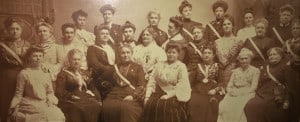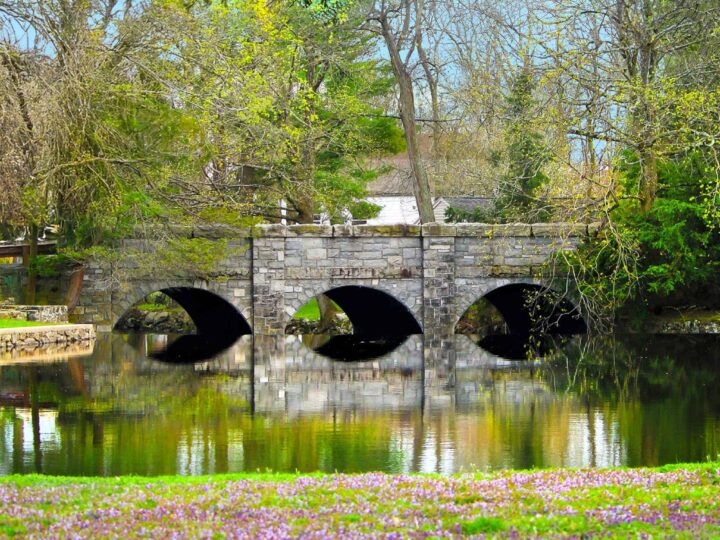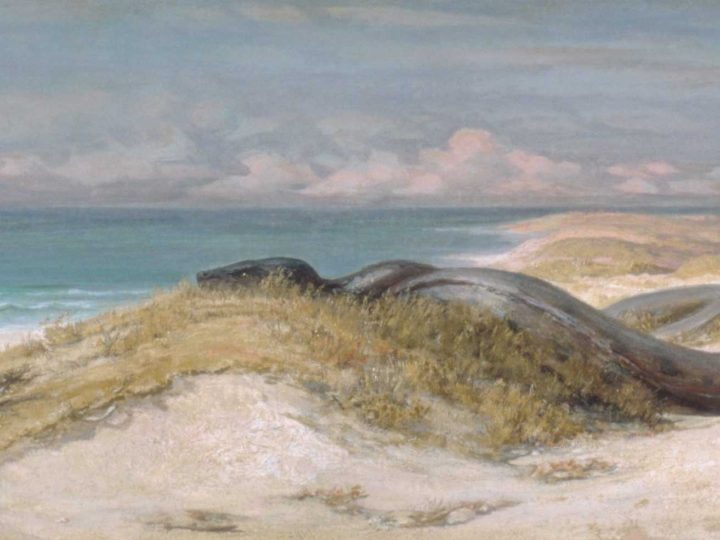
When you visit the Freelove Baldwin Stow Chapter of the Daughters of the American Revolution (DAR) at their neat, midcentury colonial chapter house on Prospect Avenue, it doesn’t exactly scream HISTORY. Yet history is everywhere you look; it even lives in the ground on which the property is situated. The chapter house, one of only two in the state, was built in 1953 on a site that was once the garden of the Rev. Peter Prudden, Milford’s founder and the spiritual leader of the city’s first settlers, part of the original land grant deeded to Prudden in 1639.
History, of course, is at the core of the DAR.
The DAR began in 1890 when the newly formed Sons of the American Revolution (SAR) refused to admit women to their ranks. “Were there no Mothers of the Revolution?” an indignant Mary Lockwood wrote in the Washington Post. Only a few months later, the first organizational meeting of the new National Society of Daughters of the American Revolution was held. Like the SAR, membership in the DAR was (and still is) contingent on proving “lineal, bloodline descent from an ancestor who aided in achieving American independence.”
Fast forward six years when, in the spring of 1896, Milford society doyenne Mary Hepburn Smith organized the Freelove Baldwin Stow Chapter of the DAR, filling it with women like herself who were the granddaughters and great-granddaughters of revolutionary patriots.
According to an article by one Mary Philotheta Root published in 1904, “The Milford chapter did not need to deliberate long in the selection of a name. The name of Freelove Baldwin Stow, wife of Captain Stephen Stow, appealed to them at once.” Not only did Freelove Baldwin Stow “give her four sons, Stephen, Samuel, John, and Jedediah to the cause of liberty,” but her husband as well. Milford hero Captain Stephen Stow died in early 1777 after caring for a large group of sick and dying American soldiers who had been abandoned on Milford’s shore by a British warship. Freelove’s remaining son and two daughters carried on the Stow name and legacy.
In 1907 the DAR built its first chapter house downtown on land (now the Milford Bank parking lot) that was donated by Mary Hepburn Smith. The then-owner of the Stow house, according to Root’s article, “kindly had one of the original rafters removed that the charter of the Freelove Baldwin Stow Chapter might be framed with wood from the home of Stephen Stow.”
“The original chapter house was built by our first Regent [Mary Hepburn Smith] and the first members of the chapter,” says 52-year member and one-time State Regent Marolyn Paulis. “By putting up trestle tables and holding dinners and baking cakes they raised enough money to put up a chapter house!” Given that the cost was probably around $3,000, that’s a lot of cake.
The property was sold to the Milford Bank in the early 1950s. “There was a family that lived next door to the current chapter house named Nettleton who had family that were members,” says Paulis. “They sold the acre of land our chapter house is on to the DAR for $1.00. With the proceeds of the sale of the original house we built the current house and had a little left over to start an endowment to maintain it.”
The 1907 cornerstone from the original house rests under the bay window of the current chapter house, where historical furniture and china donated by members are on display. Mary Hepburn Smith’s portrait holds a place of honor, as do photographs of members who have served in various branches of the military. The DAR’s mission of historic preservation, education, and patriotism are clearly on display. The chapter’s history, much of it paper, has been preserved in a large antique dresser.
Diving into the archives, Chapter Regent Kendra Davis and Honorary Regent Barbara Stewart unearth scrapbooks, photographs, newspaper clippings, guestbooks, and journals dating back to the first days of the chapter. It brings out the history geek in Davis, a three-year member in her first year as Regent, who made her connection to the DAR through an online genealogical search. “I had one of those free Ancestry.com accounts and my tree just went on, and on, and on,” she says. “One day I saw the words SAR and I said, ‘Ooh, what’s this?’ I realized my great aunt happened to be a member, and so I joined. I jumped in with both feet.”
Davis was able to take advantage of today’s technology when making the historical connection to her Revolutionary War ancestor. For Barbara Stewart, like hundreds of members who came before her, the story began in the family bible. “Come to find out that not everything was correct in that bible,” she laughs. But while tracing your family back might not be easy, both agree it’s certainly worth the effort. The popularity of Ancestry.com and DNA sites, as well as programs like “Who Do You Think You Are,” has prompted a renewed interest in organizations like the DAR. Plus, says Davis, “If you hit a brick wall and you just can’t find it, we have two committees that will help you.”
Currently with about 60 members, the chapter is working to dispel the image of what Davis calls “white haired ladies sitting around drinking tea.” Stewart, a 9-year member, wholeheartedly agrees. “It’s not like when women didn’t work outside the home. Back in the day they’d have 150 members and a meeting would be packed. Now you have two income families with children and a lot of people just don’t have the time. I didn’t join until our kids were grown,” she admits.
Paulis, whose 95-year old mother Sarah Agro has been a member for more than 60 years, says joining the DAR is “a great thing for young professional women,” citing the connections, camaraderie, and civic action. DAR members have long been at the forefront of issues that affect women she says. “Susan B. Anthony was a member of the DAR. A lot of suffragettes were in the DAR. It’s always had a presence of very active women fighting for advancement. I believe we’ve always been great supporters of women and women’s issues.”
The DAR’s commitment to the community has also remained constant. Each year the Baldwin chapter sponsors dozens of projects including good citizenship and community service awards, scholarship programs, and essay contests. They provide support for veterans through the VA in West Haven and Homes for the Brave in Bridgeport. They also sponsor a veteran’s luncheon that coincides with the annual laying of Christmas wreathes on graves of every veteran in local cemeteries (the Wreaths Across America program.)
And as proud as the Baldwin DAR members are of the grand national headquarters in Washington D.C., with its museum, library, and performance buildings (“The largest group of buildings completely owned and maintained by women, period,” says Paulis), they are equally as proud of their 56 x 40-foot chapter house. “It’s home,” says Barbara Stewart. And as a home, it’s nice to have visitors. “It’s always wonderful to welcome new people from the community into our chapter house,” says Paulis. “And particularly lovely to welcome new members.”






